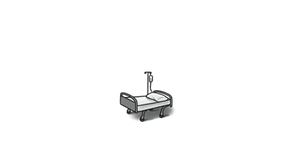Dystopia: A bleak future ahead
By Kyan Wang Apr. 5, 2023
A cruel, all-seeing government. A future on the brink of extinction. A world devoid of meaning. Dystopias—defined by the Oxford Dictionary as an imagined state or society in which there is great suffering or injustice—have taken many of these forms in literature and philosophy, but at its core, dystopias are a representation of the loss of self-agency at the hands of an oppressive force. Dystopian societies are most often characterized by scarcity, oppression and fear. Scarcity is portrayed by a lack of necessities, such as the scramble for food and shelter in a radioactive wasteland. Oppression is often shown as an authoritarian regime where the individual is crushed under the boot of the state and fear is commonly represented by an all-seeing government that watches for every transgression.

Dystopian media has found its place among the post-apocalypse, alternate history, science-fiction and fantasy worlds. The poster-child for the modern dystopia—Suzanne Collins’ “The Hunger Games”—has spanned both a book and film series, showing the immense impact dystopian fiction has had on popular culture. The series portrays a totalitarian government ruling over a post-apocalyptic America; after climate disasters wreak havoc across the world, citizens starve while working backbreaking jobs for the tyrannical ruling class—a textbook example of the genre.
Although dystopias are defined as imaginary, many of their characteristics are present in real world societies. The totalitarian state of North Korea checks several of the boxes ascribed to a dystopia: Its government silences dissent, and conformity to the regime is rigorously enforced through an extensive network of informants. North Korea’s Supreme Leader, Kim Jong-Un, as with his predecessors, has groomed a cult of personality based on Juche, the state ideology of the country that emphasizes self-reliance. Because of the isolationism Juche fosters, the country cannot even meet its citizens’ basic food demands. CNN states South Korea has claimed that starvation deaths are occurring as North Korea enters its largest food crisis since the 1994 famine, which killed hundreds of thousands to millions of people.
“When the government begins to levy unfair taxes on the populace for selfish reasons, a foundation for a dystopian state is born. A government that works against its people will gradually worsen and could result in a country like North Korea, where 60% of the country lives in poverty,” Junior Matthew Namba said.
A striking parallel can be drawn with George Orwell’s famous dystopian novel “1984,” in which an all-seeing “Big Brother” figure rules supreme. “1984” reflects the fictional ideology of English Socialism, or Ingsoc, a political system that distorts information with deceitful intent. By perpetually lying to its citizens, Oceania—the setting of 1984—keeps its population subjugated and clueless to the country’s poverty and suffering.
Most dystopias begin with the rise of an authoritarian government, often as a result of societal collapse, which itself stems from political or environmental catastrophes. In the power vacuum left after a governmental collapse, a scramble for control over the remaining citizenry ensues, and the most manipulative—and often most cruel—become the new rulers. The literary magazine The Paris Review explains that tyrants often use totalitarian methods such as mass surveillance to instill fear and complacency in the population in an attempt to stabilize their newly acquired positions. After the successful establishment of an effectively repressive system, the average person has little agency in escaping their poor conditions.
“A dystopian society would be nearly impossible for its citizens to overthrow, as its systems of oppression force its citizens to primarily focus on basic survival. In such a society, opposition to the government would be very weak, as the poor would not have the skills or social awareness to effectively organize and resist their oppressors,” Sophomore Ian Marshall said.
The modern world has stood steadfast amidst many tests and survived countless events that could have resulted in a global dystopia, such as those during World War II and the Cold War. Dystopian media and literature are cautionary tales that illuminate existing, real world elements that have the potential to precipitate widespread calamity. Society could fall victim to the same traps explored in these works if it fails to recognize and address systemic issues before it is too late.
About the Contributors

Kyan Wang
staff writer
Kyan Wang is a sophomore at Leland High School and the Tech Columnist and staff writer for The Charger Account. In his free time, he enjoys wasting away on his computer and running.

Harry Kang
artist
Harry Kang is a sophomore at Leland High School currently working as an artist for The Charger Account. During his free time, Harry likes to listen to Frank Ocean and procrastinate on school work. Occasionally he breathes oxygen and sometimes consumes H2O.

















Comments